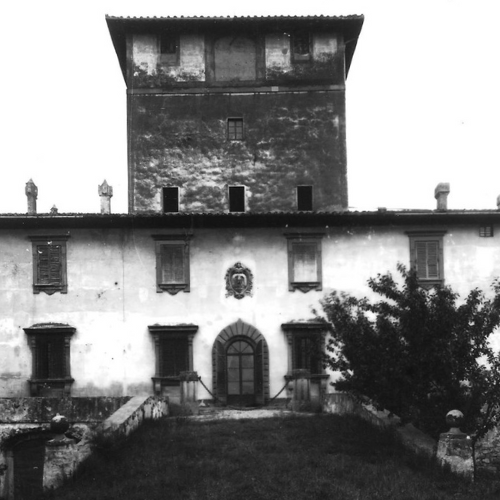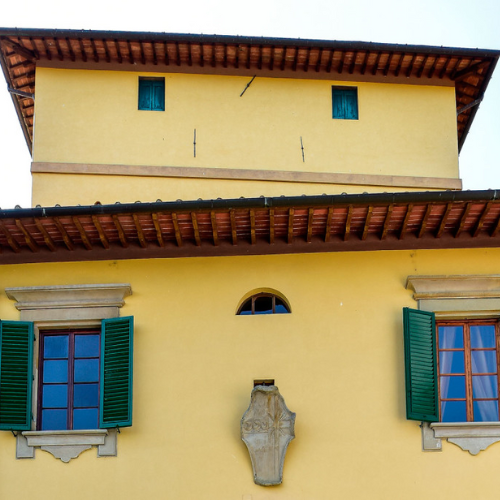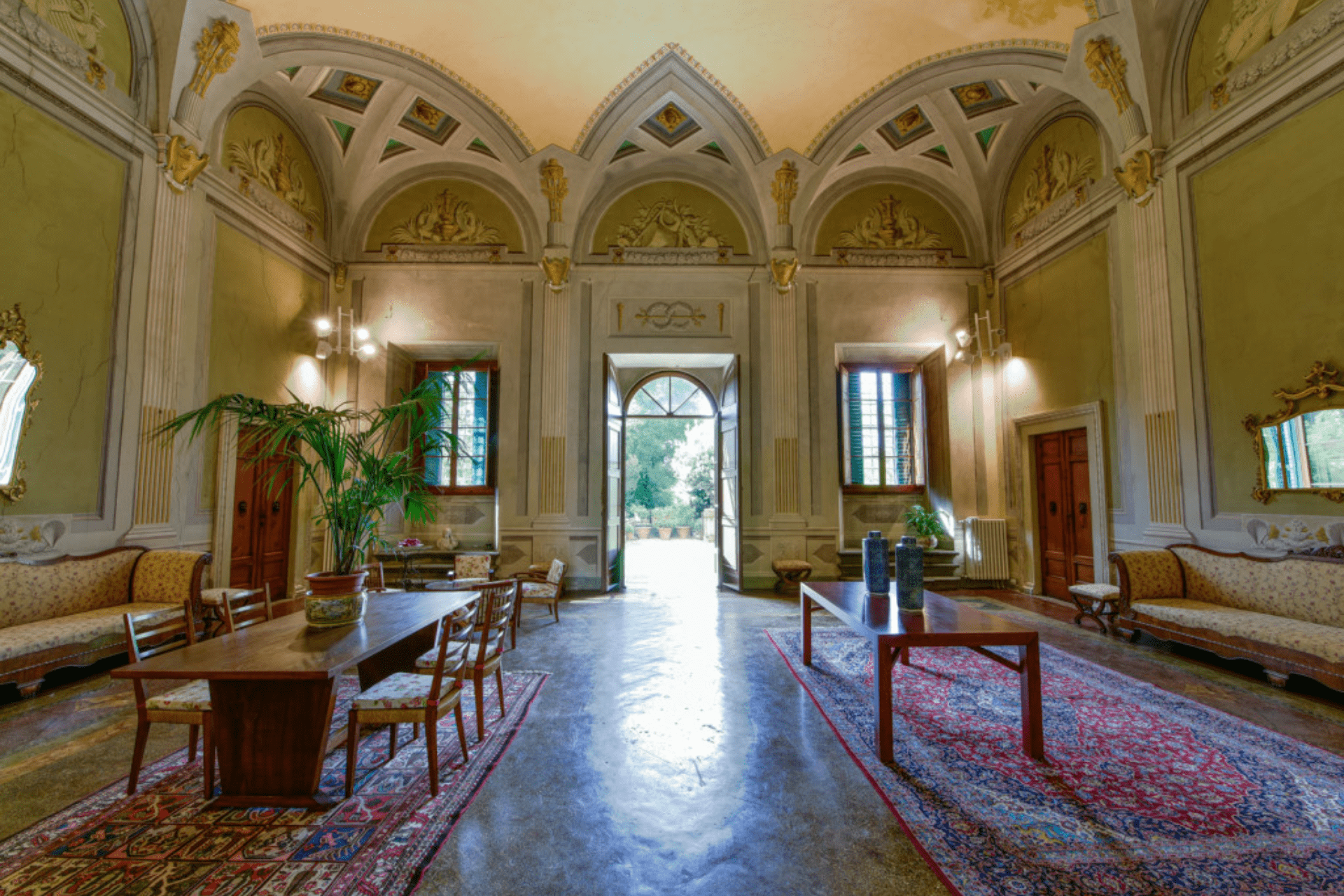The history of the villa
The strategic location recalls the original nucleus of an ancient watchtower (1172) in defense of the Florentine Oltrarno.
Developed into a rural dwelling, and then into a master's chasa, it was documented as the possession of important Florentine families, such as the Calzaiuoli family (1427), the Bartoli Agorai (ca. 1450) and the Carnesecchi (1577)
Its arrangement into a lord's chasa, or villa, was completed with the purchase of Senator Lorenzo Strozzi (1595-1671). On the occasion of his marriage, which took place in 1614 and in which he took as his bride Maria Simona Machiavelli, great-granddaughter of the great Niccolò, the nobleman decided on a new facade with monumental windows and entrance door surmounted by the bipartite stone coat of arms.

In the early twentieth century the beautiful Villa on Campora Street was inhabited, for long and pleasant stays, by several distinguished Pygionists such as the painter Staude (from 1930) who said he found here the harbor in which to land after so many wanderings and where he invited his closest friends, such as the composer Luigi Dalla Piccola, for concerts and musical evenings around the beautiful piano that Albert Einstein had gifted to his sister Maja. The future Don Lorenzo Milani, too, had promising painting experiences with Staude here. And Tiziano Terzani, who, of Staude, had married his daughter Angela, was also 'at home' here.

Filippo and Laura, after restoring the fronts and facades of the building and restoring the efficiency of the roofs, intended to reserve the most exclusive and prestigious part of their villa for hospitality. With the intention of maintaining the warmth and intimacy of a private and special home, all the restoration and adaptation works to modern living and technological needs were designed.












